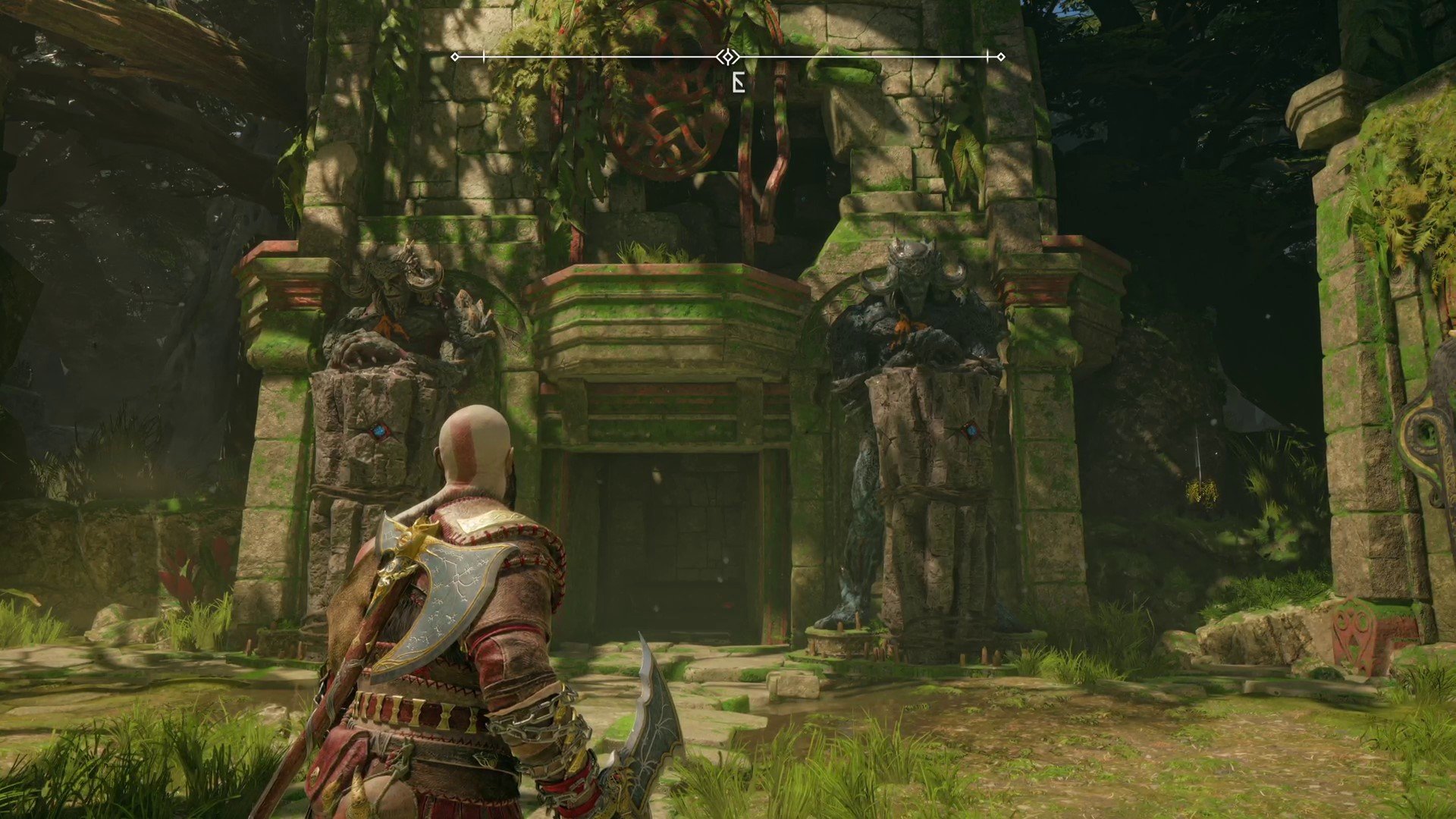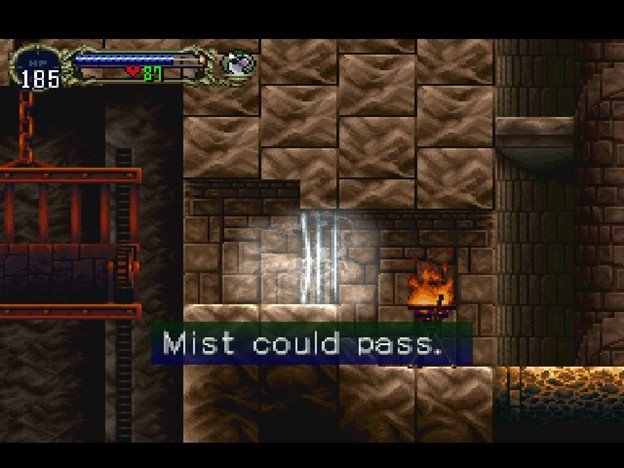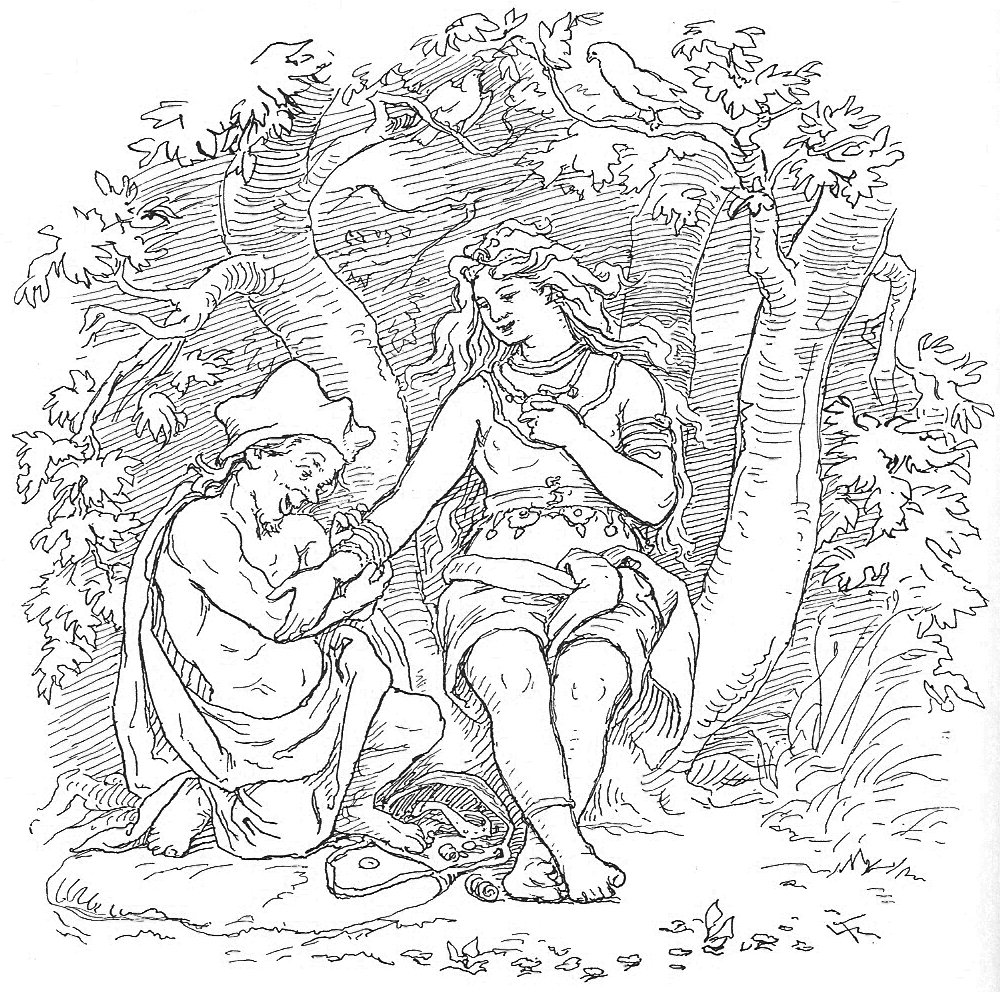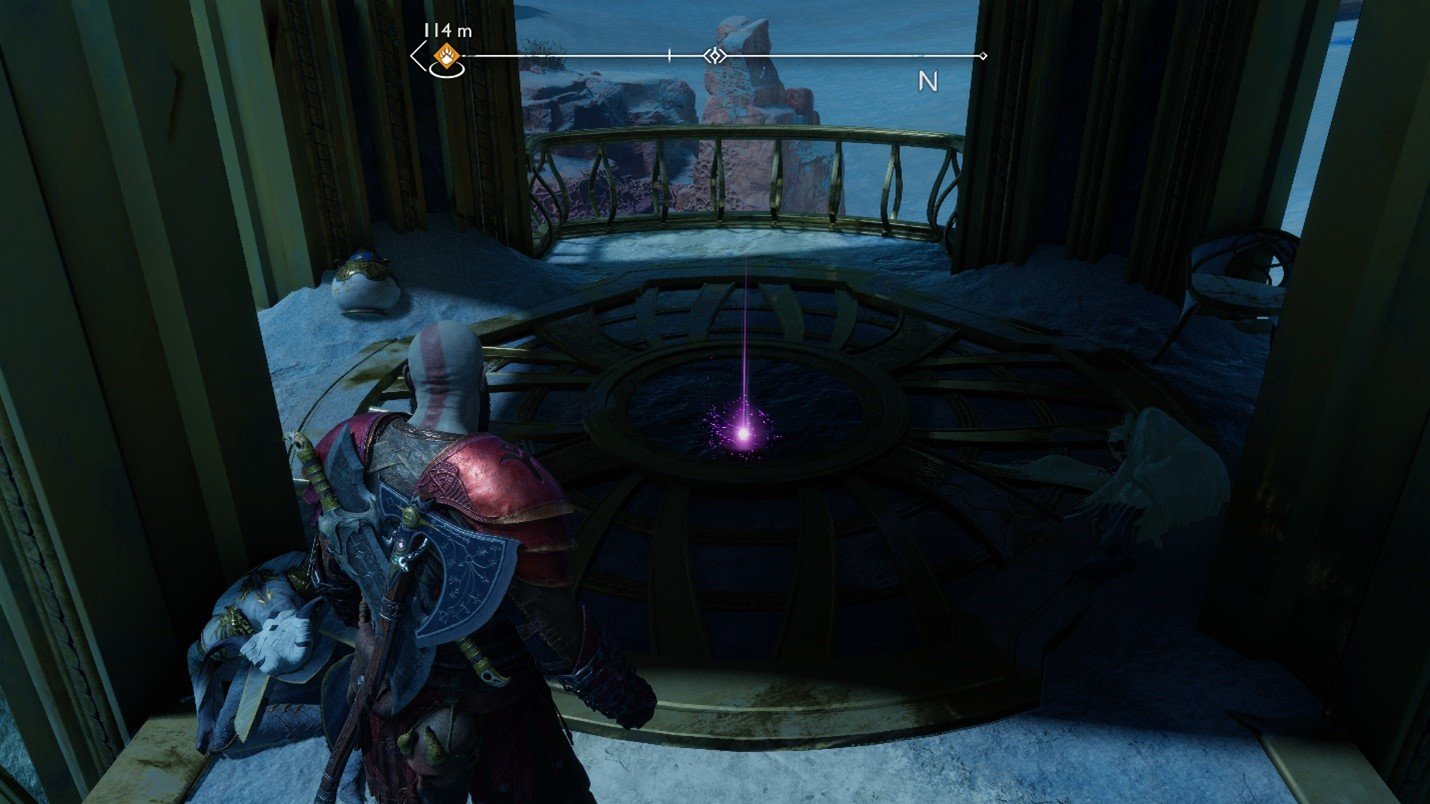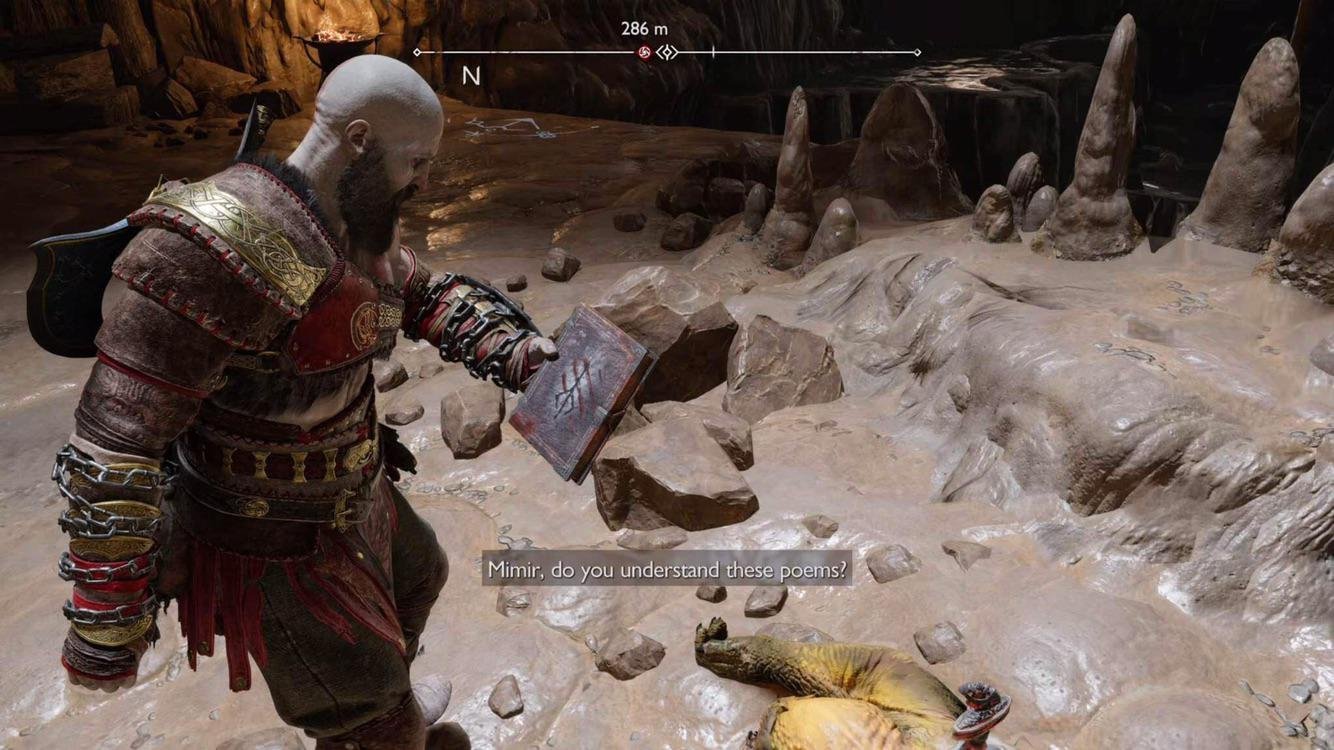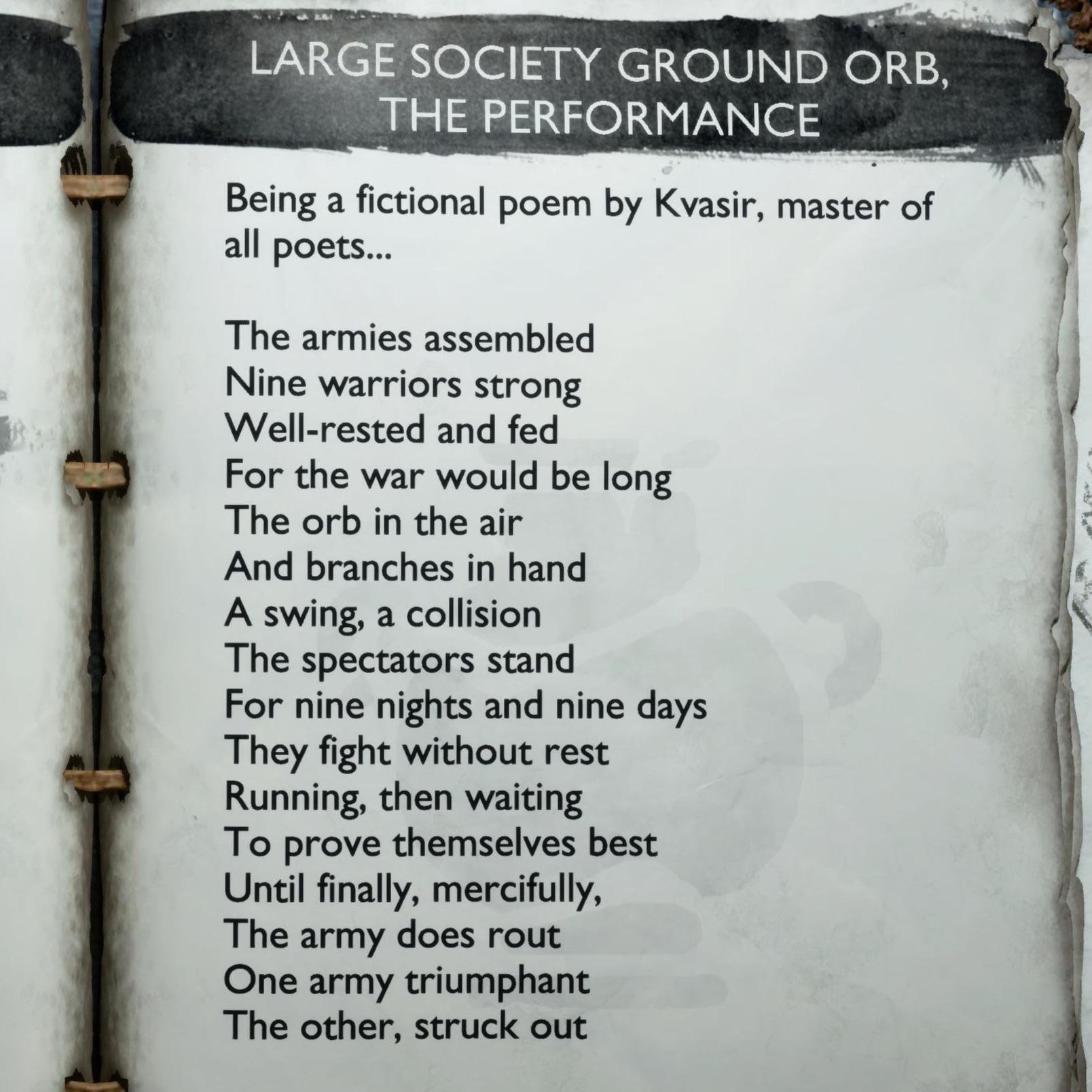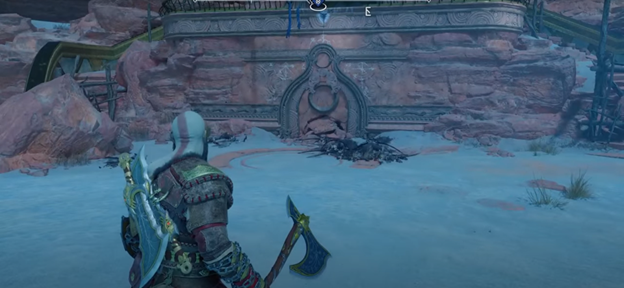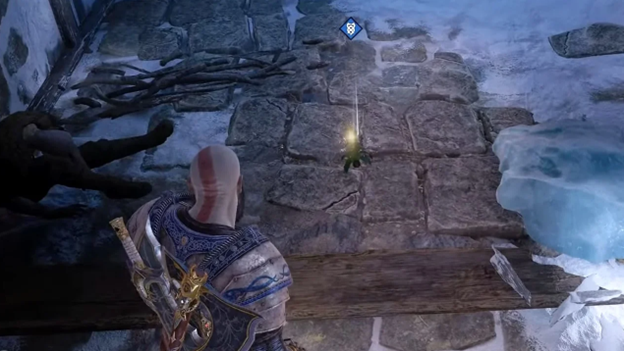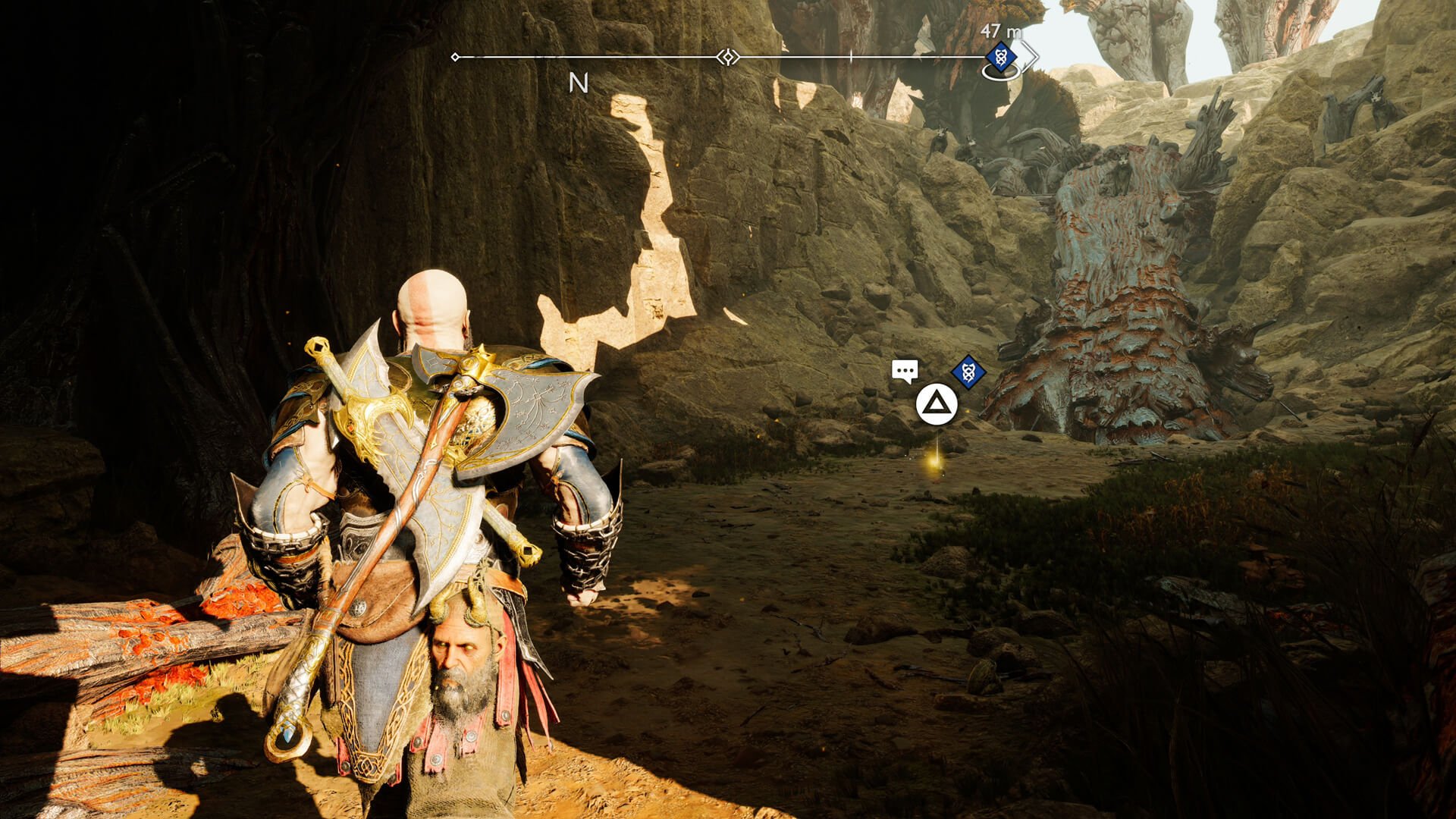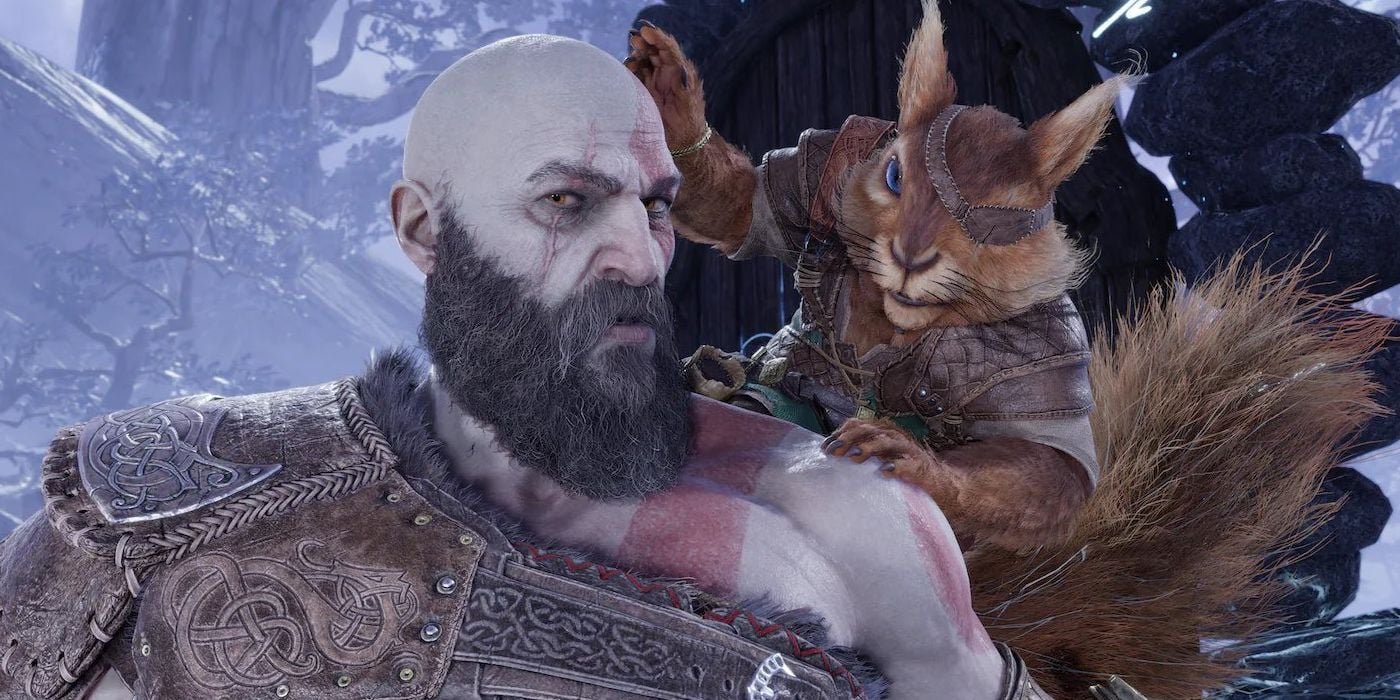In the below post, I talk about challenges I faced while working on God of War: Ragnarök’s “The Slumbering Trolls” quest. I’m sharing this anecdote to share how I approach problem-solving as a Quest/Systems Designer.
During the production of God of War: Ragnarök, I was tasked with a creating a quest where Kratos would awaken Trolls petrified in stone by inserting a “Cleansing Rod” into stone consoles in front of the Trolls. However, as I started to work on the quest, my producer informed me that there was no longer time in the budget to create the assets originally planned for this quest Due to this, my lead informed me that the quest would likely be cut.
Two Stone Trolls in Vanaheim.
I knew this was a favorite quest of the team and our director, so I investigated ways that we could redesign the quest using existing assets. First, I did a review of our game’s “vision documents”, which articulated at a high-level what kind of experience our director aimed to create with Ragnarök. One of the games referenced in these documents was Castlevania: Symphony of the Night, so I played that game in my free time and took note of how it structured its quests. I noticed that many areas of Dracula’s Castle could be unlocked by using a mechanic discovered in a totally different part of the Castle, so I endeavored to have the Stone Troll quest use a similar lock and key structure.
One of the things that made this lock and key design satisfying is that you weren’t explicitly told which “keys” were for which “locks.” For example, early in Castlevania: SOTN, you come across a see-through grate that blocks your path. Later on, you find a relic called “Form of Mist” that allows you to temporarily turn into a cloud of mist. Discovering how Castlevania’s Relics interact with Dracula’s Castle was one of the high points of SOTN for me, so I wanted to emulate the same sense of discovery with this quest.
“The Form of Mist” relic (in right column) allows the player to move through grates in Dracula’s Castle.
A Player uses the “Form of Mist” relic in Castlevania: Symphony of the Night to move through a grate. We aimed to replicate similar lock-and-key gameplay in the Stone Troll quest.
With that design philosophy in mind, I surveyed Ragnarök for mechanics and abilities that could be used to awaken the Stone Trolls. At first, I thought I could use the Draupnir Spear to awaken the Trolls because the player unlocked it around the same time they would have originally unlocked the “Cleansing Rod” in the original design of the quest. I felt the best way to preserve the mystery of the quest (and add some light puzzling) was to have the Player activate the Troll by embedding spears in stone Idols hidden around each Troll, similar to how the Player unlocks Nornir Chests in other parts of the game. Since God of War (2018) and the first half of God of War: Ragnarök teaches the Player that these Idols will always give the Player a reward, I felt substituting the reward for a difficult boss fight would make for quite a surprise! (I was inspired by this moment in TLOU2.) I built a quick prototype of this concept for Anthony DiMento, my lead, and he was happy with the design.
A Nornir chest in the final game that is unlocked by embedding spears in Idols near the chest.
However, I had forgotten to account for the fact that the Cleansing Rod was also supposed to unlock a Stone Dragon in the game’s Dragon Beach region. This was a problem because that region already had a Nornir Chest puzzle that used the same Stone Idols that I would have used to unpetrify the Stone Dragon. Moving that chest was out of the question, so I had to return to the drawing board.
Stone Dragon in Ragnarok’s Dragon Beach region. It was important that this dragon be unpetrified in the same way the trolls were.
Around this time, there had been several changes to Ragnarok’s Relics, which are permanent items the Player can use to activate various combat effects. I asked my lead if we could use some of the cut Relic assets and unlock locations to create a new relic that would only unpetrify the Stone Trolls and Stone Dragon when activated. Crucially, we would not explicitly tell the Player that this Relic (the “Mystical Heirloom”) unpetrified the Trolls; we would only hint at it via banter and lore scrolls.
Both my lead and Eric Williams, the game’s director, approved of this idea. To further sell this idea, I cracked open my book of Norse Mythology and found a Dwarf called Alviss who was himself petrified by Thor. I then worked with Anthony Burch, the quest’s writer, to weave this Dwarf into our quest. Since Alviss is the character in Ragnarök who is responsible for petrifying the Trolls, I felt his mythology-dictated fate would add some funny irony to the quest (though he is technically found frozen in Ragnarök.)
Alviss is found frozen alongside the Mystical Heirloom and a lore scroll.
Alviss, a Dwarf who tried to marry Thrud, Thor’s daughter. Thor disapproved of this match, so he tricked Alviss into being petrified by the sun. Stone cold.
After some playtesting and tuning, we were able to implement a quest that was true to our director’s vision of the game without creating additional work for other departments. Players enjoyed the quest and IGN even did a short feature on it. I’m proud of the work I did on this quest because it made the game better and my team’s lives easier.
This quest was made by possible by working with these great people:
Writer: Anthony Burch.
Level Designers: Naomi Jade, Joel Grattan, Jacob Antonucci, Brendon Fitzgerald.
Combat Designers: Robert Rappoport, Henry Lee, and Stephen Oyarijivbie.
Senior Progression Designer: Ryan Baker.
Lead: Anthony DiMento.
Producer: Katie Tigue.
Director: Eric Williams.
Ragnarök’s Directors.
